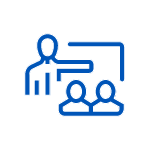In this Penetration Testing course, you will learn to discover weaknesses in your own network by using the mindset and methods of a hacker.
Penetration Testing, Pen Testing, hacking, cybersecurity, vulnerability assessment, network security, cyber defense, exploit, countermeasures, risk reduction, antivirus evasion, ethical hacking, security testing, OS security, network weaknesses, enterprise security, offensive security, defensive security, computer security, system security, IT security, cyber threat, cyber attack, security assessment, security training, security tools, hacker mindset, security measures, digital security, security seminar, cyber security certification, Penetration testing, ethical hacking, network security, vulnerability assessment, exploit development, risk management, cyber security, intrusion testing, security assessment, penetration testing tools, hacking techniques, antivirus evasion, network defense, security countermeasures, vulnerability testing, security testing, penetration testing certification, cyber defense, penetration testing course, ethical hacking training, network penetration testing, security auditing, vulnerability scanning, security consulting, cyber risk assessment, penetration testing services, web application penetration testing, wireless network security, penetration testing methodology, security hardening, security testing tools, security awareness training, security incident response, security operations center, security testing services, security testing methodologies, penetration testing companies, security assessment services, security testing certification, security testing courses, security testing methodology, security testing techniques, security testing tools and techniques Penatration testing, pentration testing, penitration testing, penetration testingt, peneration testing, penetration teting, penetration testin, penatration testing tools, pentration testing techniques, penitration testing course, penetration testing certifcation, ethcal hacking training, securty testing, secuirty testing, penatration testing certification, pentration testing course, penitration testing tools, penitration testing techniques, penetraion testing, penetraion testing tools, penetraion testing techniques Penetrationstestning, etiskt hackande, nätverkssäkerhet, sårbarhetsbedömning, exploit-utveckling, riskhantering, cybersäkerhet, intrångstestning, säkerhetsbedömning, verktyg för penetrationstestning, hackningstekniker, antivirusundvikande, nätverksförsvar, säkerhetsåtgärder, sårbarhetstestning, säkerhetstestning, certifiering för penetrationstestning, cybersäkerhet, kurs i penetrationstestning, utbildning i etiskt hackande, nätverkspenetrationstestning, säkerhetsrevision, sårbarhetsskanning, säkerhetskonsultation, bedömning av cyberrisker, tjänster för penetrationstestning, penetrationstestning av webbapplikationer, trådlös nätverkssäkerhet, metodik för penetrationstestning, säkerhetshärdning, verktyg för säkerhetstestning, utbildning i säkerhetsmedvetenhet, incidenthantering, säkerhetsoperationscenter, tjänster för säkerhetstestning, metodik för säkerhetstestning, företag som utför penetrationstestning, tjänster för säkerhetsbedömning, certifiering för säkerhetstestning, kurser i säkerhetstestning, metodik för säkerhetstestning, tekniker för säkerhetstestning, verktyg och tekniker för säkerhetstestning Penatration testning, pentration testning, penitration testning, penetration testingt, peneration testning, penetration teting, penetration testin, penatration testning tools, pentration testning techniques, penitration testning course, penetration testing certifcation, ethcal hacking training, securty testing, secuirty testing, penatration testing certification, pentration testing course, penitration testing tools, penitration testing techniques, penetraion testing, penetraion testing tools, penetraion testing techniques




